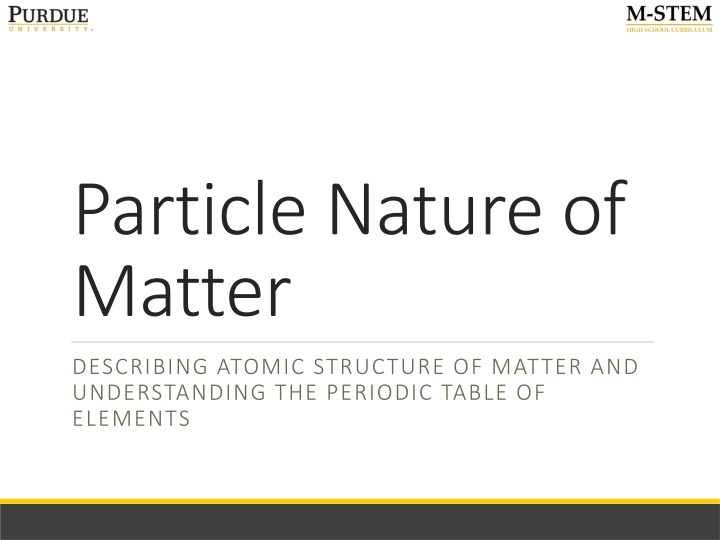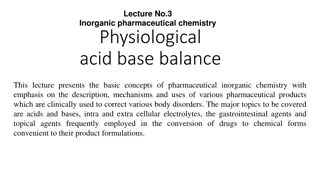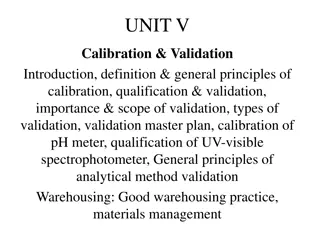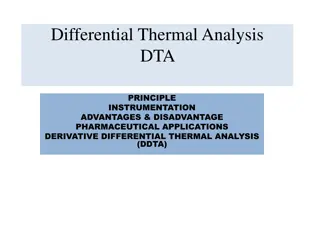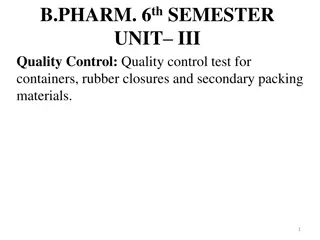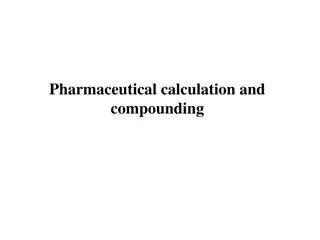Quality by Design (QbD) in Pharmaceutical Development
Quality by Design (QbD) is a systematic approach that emphasizes predefined objectives, product and process control, risk management, and harmonized quality systems in pharmaceutical development. Key characteristics include being dynamic, systematic, continuum-based, applicable to various stages of drug development, and encouraged by regulatory agencies like EMA and FDA. Regulatory tools such as ICH guidelines and pilot projects by EMA and FDA further support the implementation of QbD principles in drug manufacturing.
Download Presentation

Please find below an Image/Link to download the presentation.
The content on the website is provided AS IS for your information and personal use only. It may not be sold, licensed, or shared on other websites without obtaining consent from the author.If you encounter any issues during the download, it is possible that the publisher has removed the file from their server.
You are allowed to download the files provided on this website for personal or commercial use, subject to the condition that they are used lawfully. All files are the property of their respective owners.
The content on the website is provided AS IS for your information and personal use only. It may not be sold, licensed, or shared on other websites without obtaining consent from the author.
E N D
Presentation Transcript
Particle Nature of Matter DESCRIBING ATOMIC STRUCTURE OF MATTER AND UNDERSTANDING THE PERIODIC TABLE OF ELEMENTS
Building Common Knowledge All objects are made up of matter Matter is anything that takes up space and has mass Properties are the specific characteristics that describe matter Matter can be identified using its specific properties All matter has the general properties of mass, weight, volume, and density Other properties are physical or chemical Physical: Does not change the identity of the matter Chemical: Changes the matter in determining the property
Physical Properties Physical properties can be observed or measured without changing the identity of the matter. Basically, properties you notice when using one of your five senses: Feel mass, volume, texture Sight color Hear Smell odor Taste sweet, sour, bitter
Kinetic Theory of Matter Can be used to explain the physical states of matter All particles have energy, energy is dependent upon whether substance is solid, liquid, or gas Temperature is a measure of the average kinetic energy of the particles There are spaces between particles of matter
Kinetic Theory of Matter cont., The particles in the diagrams could be atoms, molecules, or ions depending on the type of substance. Energy transferred to a substance changes the particles energy. This is used to overcome forces of attraction between particles: some of these forces are overcome during melting all of the remaining forces are overcome during evaporating or boiling
Kinetic Theory of Matter cont., Energy transferred from a substance to the environment changes the particles energy as forces of attraction form between them. The particle model does not take into account: the size and shape of particles or the space between particles In addition, the particle model does not take into account the forces between particles.
Particles of Matter The study of chemistry begins with the basic unit of matter, the atom. The concept of the atom came first from the Greek philosopher Democritus, nearly 2500 years ago. Democritus thought that there had to be a limit you divide a substance without changing it into something else, and he called the smallest fragment the atom, from the Greek word atomos, which means unable to be cut.
Atoms Atoms are incredibly small. Placed side by side, 100 million atoms would make a row only about 1 centimeter long about the width of your little finger! Despite its extremely small size, an atom contains subatomic particles that are even smaller. The subatomic particles that make up atoms are protons, neutrons, and electrons. The subatomic particles in a carbon atom are shown
Protons and Neutrons Protons and neutrons have about the same mass. Protons are positively charged particles (+) and neutrons carry no charge at all. Strong forces bind protons and neutrons together to form the nucleus, at the center of the atom.
Electrons The electron is a negatively charged particle ( ) with only 1/1840 the mass of a proton. Electrons are in constant motion in the space surrounding the nucleus. They are attracted to the positively charged nucleus but remain outside the nucleus because of the energy of their motion. Because atoms have equal numbers of electrons and protons, their positive and negative charges balance out, and atoms themselves are electrically neutral. The carbon atom shown has 6 protons and 6 electrons.
Atomic Structure of Matter Each element is made up of the same fundamental particles in varying quantities Number of protons equals number of electrons in neutral elements The sum of protons and neutrons equals atomic mass of element Elements organized by atomic mass units (a.m.u)
Periodic Table The periodic table organizes the elements according to how they combine with other elements (chemical properties). The periodic table is organized in order of increasing atomic number.
Periodic Table cont., The periodic table organizes elements into similar characteristics. Each horizontal row is called a period. Each vertical column is called a group. All the elements in Group 1 of the periodic table form similar compounds. The metals lithium, sodium, and potassium all form compounds with a ratio of 2 atoms of the metal to 1 atom of oxygen.
Atomic Number and Mass The atomic number of individual atoms is equal to the number of protons within the nucleus The mass of individual atoms is so small that the numbers are difficult to work with. To make calculations easier, scientists use the atomic mass unit (amu). The atomic mass of any element is the average mass (in amu) of an atom of each element. ??? = ?????? + ??????? ?????? = ??? ??????? ??????? = ??? ?????? 16.0??? 8 ??????? = 8 ????????
Atomic Number and Mass cont., The mass of the nucleus determines the mass of an atom because protons and neutrons are much larger and more massive than electrons. Electrons are bound to the nucleus by the attractive force between electrons (-) and protons (+). ? ???? = ??????? + ????????? ? ???? = ?????? # + ?????????
Atomic Number and Mass cont., Almost all elements have one or more isotopes that are stable. Stable means the nucleus stays together. ??????? = ??? ?????? 12??? 6 ??????? = 6 ???????? 13??? 6 ??????? = 7 ???????? 14??? 6 ??????? = 8 ???????? Carbon-14 is radioactive because it has an unstable nucleus.
Chemical Compounds A chemical compound is a substance formed by the chemical combination of two or more elements in definite proportions. Scientists show the composition of compounds by a kind of shorthand known as a chemical formula. Water, which contains two atoms of hydrogen for each atom of oxygen, has the chemical formula H2O. The formula for table salt, NaCl, indicates that the elements that make up table salt sodium and chlorine combine in a 1:1 ratio.
Chemical Compounds cont., The physical and chemical properties of a compound are usually very different from those of the elements from which it is formed. For example, sodium is a silver-colored metal that is soft enough to cut with a knife. It reacts explosively with cold water. Chlorine is a very reactive, poisonous, greenish gas that was used in battles during World War I. However, the compound sodium chloride (table salt) is a white solid that dissolves easily in water, is not poisonous, and is essential for the survival of most living things.
Chemical Bonds The atoms in compounds are held together by various types of chemical bonds. Bond formation involves the electrons that surround each atomic nucleus. The electrons that are available to form bonds are called valence electrons. The main types of chemical bonds are ionic bonds and covalent bonds.
